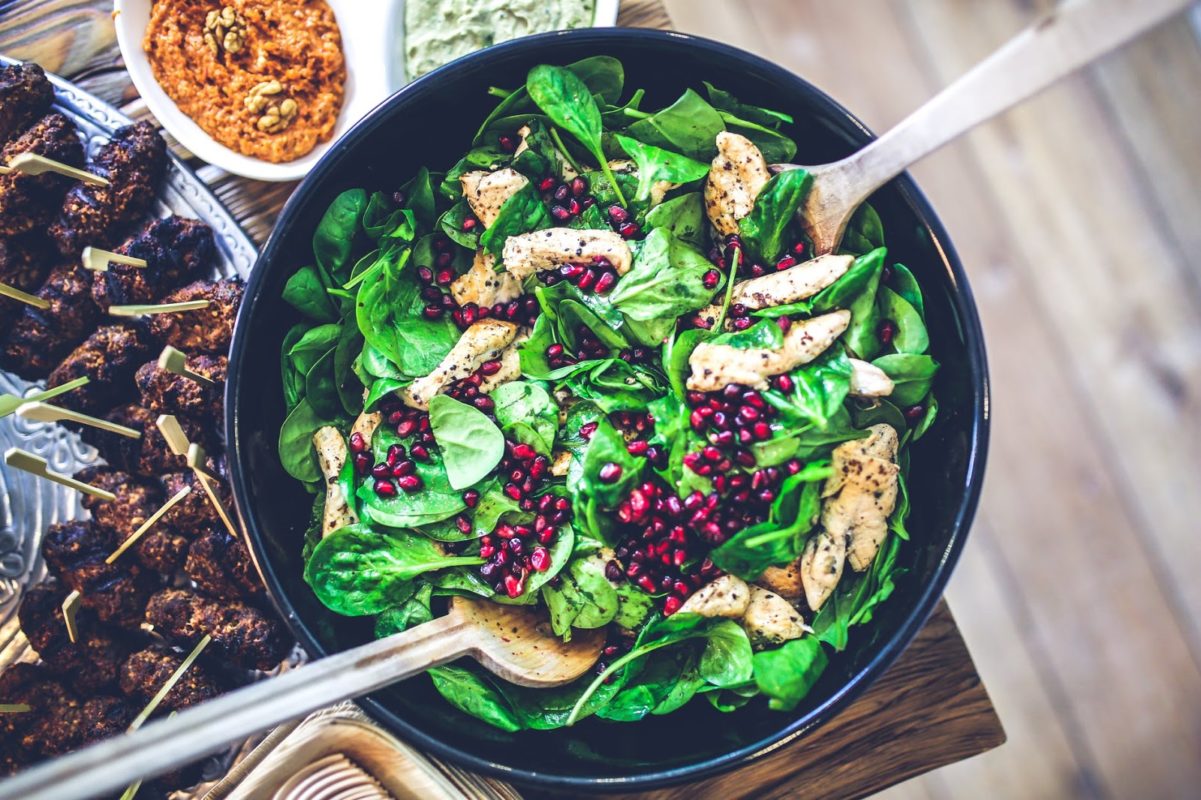Are all calories created equal?
Is chicken from Walmart the same as chicken from Whole Foods?
Should you buy organic?
Just like food quantity, food quality is extremely important as well! The source of your food is extremely important. Just as you want to make sure you are eating the right number of calories to accomplish your goals, you also want to make sure that you are eating high quality food.
Have you ever wondered why you can get chicken at Walmart for significantly cheaper than chicken from Whole Foods?
Why do you think that is?
What do you think would happen if you traced that chicken back to the farm where it was raised?
Do you think the agricultural practices would be the same?
The fact of the matter is that all chicken is not created equal. In fact, not all food is created equal. Period.
Let’s take a closer look!
Protein
Protein is probably the macronutrient that is most misunderstood. People think that all protein (meat) is good for you, but the reality is that many of the protein sources in America are filled with antibiotics, hormones, and grain fed foods that cause the animal to have a host of issues. So, along with the protein, you are ingesting other things that may be harmful.
Ground beef from Taco Bell is not even close to the same quality as grass fed beef from Whole Foods.
When it comes to sourcing protein, you should prioritize sourcing from grocery stores like Whole Foods, Trader Joes, Sprouts, Natural Grocers, Farmers Markets, Costco, etc.
Healthy Protein Sources:
Ground turkey, ground beef, ground bison, ground lamb, new york strip steak, ribeye steak, pork tenderloin, whole egg, chicken breast, egg white, greek yogurt, atlantic salmon, sockeye salmon, shrimp, sea scallops, tuna steak, albacore tuna, chilean sea bass, tilapia, atlantic cod, mahi mahi, cat fish, sardines, trout, and MANY OTHERS!
Fat
Fat is not bad! You should not be scared of healthy fats. It’s crazy how society likes to demonize foods and food groups. Some of you probably lived through the low fat era and now you have seen the transition to the low carb era of today. Who knows, maybe we will experience the low protein era at some point. An important focus of this book is to help you realize that all three of these macronutrients are very useful for fueling your body. Healthy fats should primarily come from cooking oils, animal fats, nuts, seeds, and avocados. We typically recommend specific cooking oils for each dish you are cooking depending on the smoke point of each oil.
Cooking Oil
Smoke Point
Avocado Oil
520° F
Ghee
485° F
Refined Coconut Oil
425° F
Macadamia Oil
413° F
Extra Virgin Olive Oil
375° F
Unrefined Coconut Oil
350° F
Grass-Fed Butter
300° F
Healthy Fat Sources:
Extra virgin olive oil, avocado oil, coconut oil, MCT (medium chain triglyceride) oil, grass fed butter, ghee, almonds, cashews, chia seeds, flax seeds, pumpkin seeds, hemp seeds, animal fats, pecans, pistachios, sunflower seeds, avocado, and olives.
Carbohydrates
Carbohydrates aren’t bad either. Many people believe that all carbohydrates are created equal, and don’t consider the impact that some can have on your blood sugar, gut, and overall health. For most people, sourcing the majority of your carbohydrates from vegetables is a great rule to follow. The more active you are, the more carbohydrates your body will need. Somebody that is extremely sedentary is going to require less carbohydrates than someone that is extremely active. Carbohydrates are basically the fuel for your body, no different than gas is the fuel for your car. There is a lot of confusion around carbohydrates. Vegetables, fruits, rices, breads, candy, and cake, all fall under the category of carbohydrates.
But are broccoli and candy created equal? Absolutely not.
Healthy Carbohydrate Sources:
Butternut squash, spinach, acorn squash, spaghetti squash, parsnips, split peas, carrots, regular potato, sweet potato, gluten free oats, jasmine rice, white rice, brown rice, quinoa, lentils, black beans, raspberries, strawberries, blueberries, blackberries, plantains, bananas, arugula, zucchini, snap peas, mushrooms, green beans, eggplant, bell peppers, broccoli or broccolini, cauliflower, cabbage, brussel sprouts, apples, celery, tomatoes, pears, peaches, nectarines, grapes, cherries, cantaloupe, onion, honeydew, sweet peas, sweet corn, mango, pineapple, papaya
“Clean 15”
These are the foods that you don’t have to worry about buying organic, go ahead and save some money!
Asparagus
Honeydew
Avocado
Kiwi
Broccoli
Onion
Cabbage
Mango
Cantaloupe
Papaya
Cauliflower
Pineapple
Eggplant
Sweet corn
Sweet peas
“Dirty Dozen”
These are the foods that you should spend the extra money on and buy organic. These are the foods that have the highest risk for pesticide contamination.
Apple
Peaches
Bell Pepper
Pears
Celery
Potatoes
Cherry
Spinach
Grapes
Strawberries
Nectarines
Tomatoes
When is the best time to eat carbohydrates?
Fiber-Rich: Eat as often as possible!
Sources:
-vegetables like broccoli, kale, spinach, carrots, tomatoes, onion, celery, radish, cucumber, zucchini
-most fruits…
-peas
-beans
-legumes
Starchy: Eat after working out, somewhere in the window of about 2-3 hours after.
Sources:
-long grain rices
-oats
-quinoa
-yams/sweet potatoes
-sprouted grain pasta
-corn
-sprouted grain breads
Refined Sugar: Eat rarely and mostly in the your post workout window.
Sources:
-dessert
-processed foods
-sports drinks
-most protein bars…
-fruit juice

